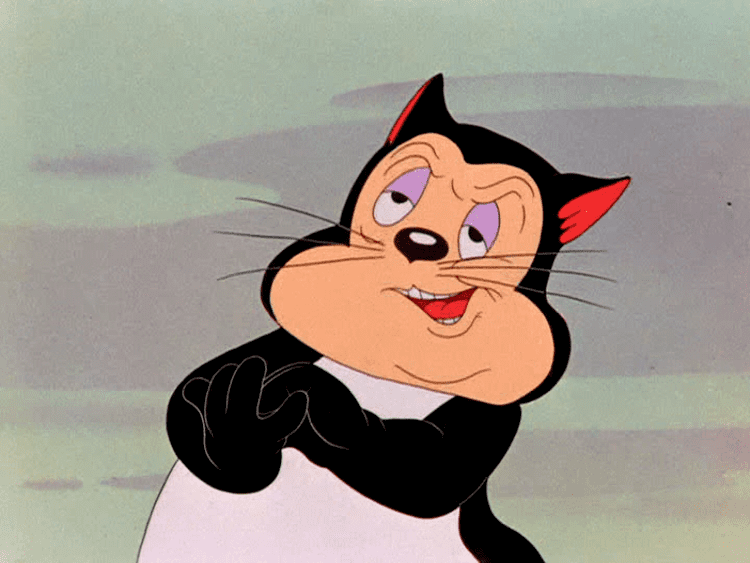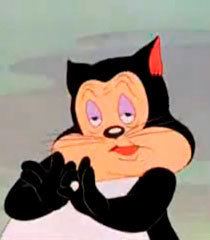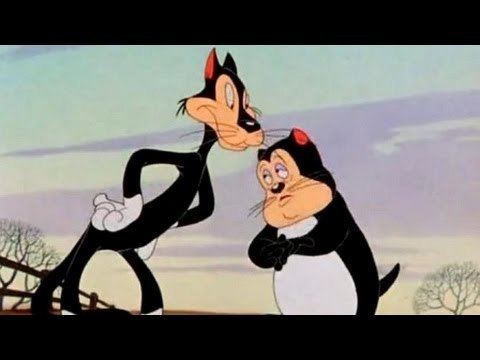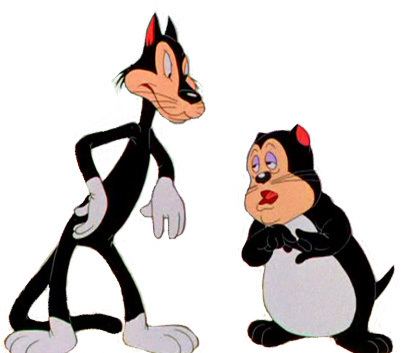 | ||
Voiced by Babbit: Tedd Pierce (1942, 1945, 1946), Corey Burton (1998)Castello: Mel Blanc (1942, 1945, 1946), Joe Alaskey (1998) Species Cats (first cartoon)Mice (second and fourth cartoon)Dogs (third cartoon) Similar Goopy Geer, Clyde Bunny, Gabby Goat, Bunny and Claude, Two Curious Puppies | ||
Babbit and Catstello are fictional characters, based on the comedic duo Abbott and Costello, that appeared in certain Warner Bros. animated cartoons.
Contents
- Overview
- A Tale of Two Kitties
- Tale of Two Mice
- Hollywood Canine Canteen
- The Mouse Merized Cat
- Later appearances
- References

Overview

Although the short, fat character calls the other one "Babbit", the tall, skinny one never addresses his partner by name; the name "Catstello" was invented later. In their first three cartoons, the "Babbit" character was voiced by Tedd Pierce, and Mel Blanc performed "Catstello".
A Tale of Two Kitties

Originally, the pair were cats in pursuit of a small bird for their meal in the 1942 Bob Clampett-directed cartoon A Tale of Two Kitties, a cartoon notable for the first appearance of the bird character, who would eventually become Warner Bros. cartoon icon Tweety Bird. The hapless duo fail in every attempt to capture the bird, establishing the pattern that would be used time and again in future Tweety cartoons.
Tale of Two Mice

Three years later, Babbit and Catstello reappeared in the similarly-named A Tale of Two Mice, directed by Frank Tashlin. Though their characterizations were the same, the two were now mice, living in a hole in the wall of a typical cartoon kitchen.
Their goal in this cartoon was the cheese in the kitchen's refrigerator, the only obstacle being the resident housecat. Babbit attempts to coerce Catstello (often by beating him up) into going after the cheese solo, using various methods to get it (which involved Catstello getting hurt). However, in the end, it is Swiss cheese, which Babbit can't stand. Angrily, Catstello beats him up and begins force-feeding the cheese, uttering one of his archetype Lou Costello's famous lines: "Oh — I'm a baaaaad boy!" (At one point in A Tale of Two Kitties, he similarly remarks, "I'm a baaaaad pussycat!")
Hollywood Canine Canteen
They make a cameo in 1946's Hollywood Canine Canteen as the pet dogs of the real life Abbott and Costello (Costello's dog even refers to Abbott's dog as "Babbit").
The Mouse-Merized Cat
Finally, in 1946, they appeared in Robert McKimson's The Mouse-Merized Cat, wherein Babbit uses a book to hypnotize Catstello. Babbit has Catstello believe he's a dog in order to scare off the cat so they can get to the food in the refrigerator. However, the cat soon studies hypnosis and is able to reverse Babbit's spell. This results in Catstello running back and forth between the two as they continue use hypnosis. Finally, Catstello becomes fed up with Babbit making him the fall guy, and turns the tables on both Babbit and the cat, hypnotizing them into believing they are, respectively, a cowboy and his trusty steed. Catstello trickes Babbit with his Yosemite Sam like voice makes babbit utters a deliberately misworded variation on the Lone Ranger's classic catchphrase — "Hi yo, Sliver, awaaayy!" — before he and the cat gallop away.
The final scene shows Catstello eating cheese and reading a book on living alone, before turning to the audience and once again reciting "Oh — I'm a baaaaad boy!"
Later appearances
The pair have made few appearances since then, mainly cameos in modern Warner Bros. animated projects such as The Sylvester and Tweety Mysteries.
